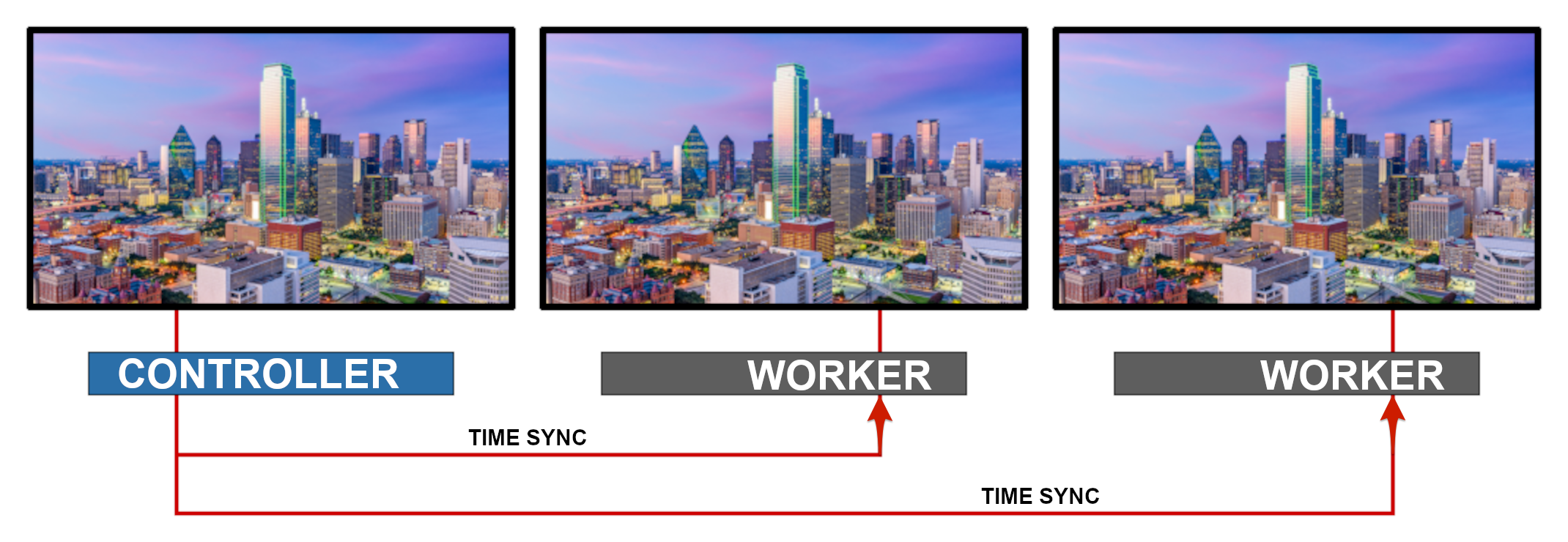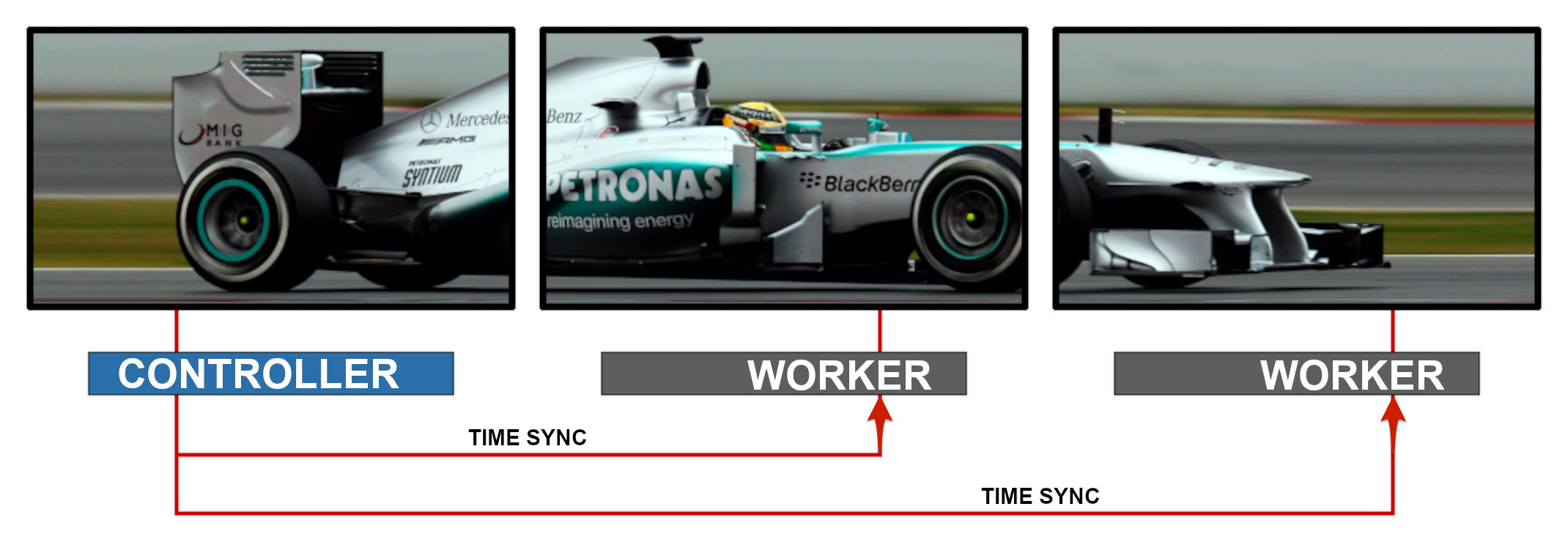- Article purpose: This document describes the new method of content synchronization across multiple screens using a controller-worker clock synchronization approach.
- Business problem: It has been difficult to synchronize playback to the millisecond across multiple devices, thus requiring a specialized device to drive multiple screens or a video wall.
- Solution: Appspace uses clock synchronization technology that allows multiple devices to work cohesively while preventing network latency issues. This allows multiple off-the-shelf devices to drive multiple screens.
- Conclusion: Appspace’s clock synchronization technology allows an easy and cost effective set up of multiple screens with synchronized video playback or use them to create video walls.
WHAT’s IN THIS ARTICLE:
Introduction
Over the past few years, changes in the modern workplace coupled with falling prices of large format displays have driven higher customer demand for synchronized playback across multiple screens. To meet this demand, traditional solutions use a single device with multiple outputs to distribute and synchronize content playback. However, this solution comes with several drawbacks.
Appspace has developed a new synchronization method to meet the stringent timing requirements for synchronized video while also overcoming the drawbacks of the traditional solution. Our decentralized solution leverages off-the-shelf devices. This flexibility improves deployment scalability, making it less costly to deploy and maintain in the long run. With these combinations, we open up digital messaging to various unimaginable ideas and opportunities.
Solution Overview
- Appspace has implemented and enhanced three key technologies to overcome the various problems with content synchronization across multiple screens: Distributed clock synchronization
- Video tile mapping
- Deterministic scheduling
Distributed Clock Synchronization
The primary challenge with distributed, synchronized video playback is accurately synchronizing the clocks on each of the individual devices. It’s important that playback begins at the same millisecond and remains in-synch throughout video playback. There are many approaches for synchronizing clocks, we follow a controller-worker pattern.Our clock synchronization method nominates a device to act as the controller timekeeper. The other devices adjust their clock to synchronize with the controller device’s time to the millisecond. To do this, a millisecond offset from the controller is calculated and then used by the worker to adjust the time.

Video Tile Mapping
Tile mapping divides content into multiple tiles pieces, known as “tiles”, and maps a screen to each tile. Appspace has enhanced our tile mapping methods to work with clock synchronization technology, which can then ensure content in each tile is perfectly synchronized. This approach can scale to a large number of devices, removing the dependence on a centralized device’s maximum output.Deterministic Scheduling
Deterministic scheduling has been fine-tuned to be smarter when complimenting clock synchronization and tile mapping. Appspace uses complex calculations to decide which content should play on each device. This allows the device to display the correct synchronized content with other devices even if any device restarts midway through a playback.Use Case
A mixture of video walls and distributed screens turn rooms, walls, and spaces into a powerful messaging medium. For example, a multiple-located entity can have a video wall in its reception and several other screens distributed in each location. In the morning, these screens play 30-minutes news and weather reports. Throughout the day, the video wall plays an eye-catching video of the organization’s brand to visitors. Meanwhile, the distributed screens play different content specific to the interests of the people in the space. In the evening, the screens play a traffic report benefiting those leaving the location. Once a month, the distributed screens present town hall videos at a scheduled time, recapping the session for attendees and those who missed the event.Conclusion
Appspace’s clock synchronization technology is the key to allowing customers to set up multiple screen synchronization or video walls on a large scale while keeping their operational costs low.See Also
Setup Synchronized Playback for Multiple Screens
Was this article helpful?
